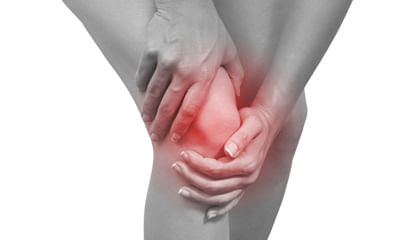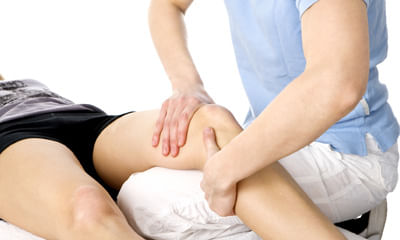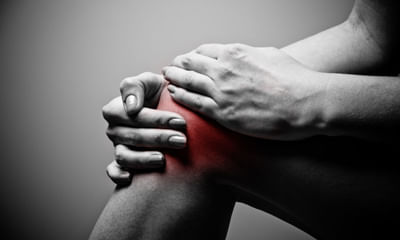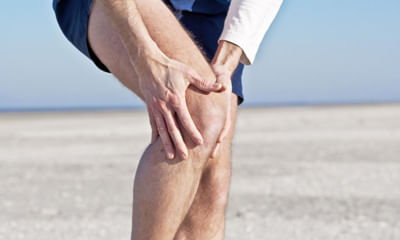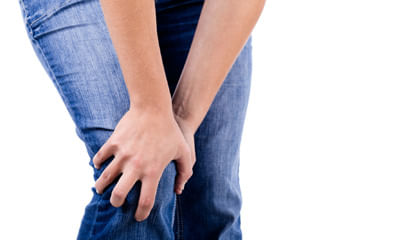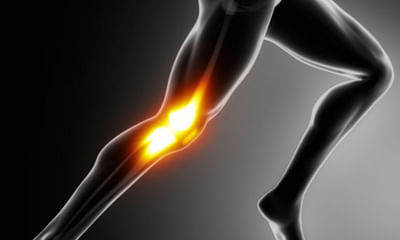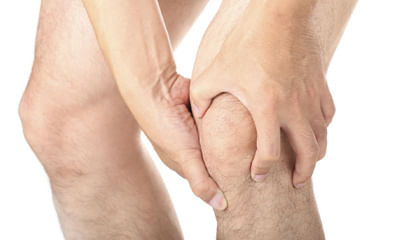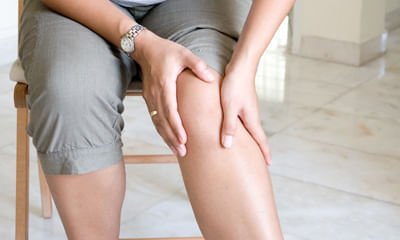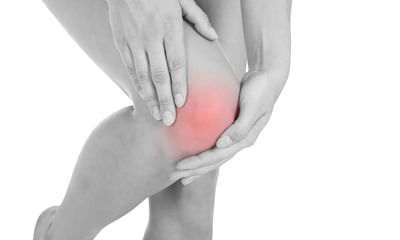Top Questions on Managing Knee Pain
There is pain in knee with buckling condition. Im unable to step down especially. There is swelling around knee too. I h ...
Ask Free Question
U can do the following exercises for knee pain url/articles/311138. Php follow these dos and donâts to help your knees feel their best. 1. Donât rest too much. Too much rest can weaken your muscles, which can worsen joint pain. Find an exercise program that is safe for your knees and stick with it. If you're not sure which motions are safe or how much you can do, talk with your doctor or a physical therapist. 2. Do exercise. Cardio exercises strengthen the muscles that support your knee and increase flexibility. Weight training and stretching do, too. For cardio, some good choices include walking, swimming, water aerobics, stationary cycling, and elliptical machines. 3. Donât risk a fall. A painful or unstable knee can make a fall more likely, which can cause more knee damage. 4. Rest, ice, compression, and elevation (rice) is good for knee pain caused by a minor injury or an arthritis flare. Give your knee some rest, apply ice to reduce swelling, wear a compressive bandage, and keep your knee elevated. 5. Don't overlook your weight. If you're overweight, losing weight reduces the stress on your knee. You donât even need to get to your "ideal" weight. Smaller changes still make a difference. 6. Don't be shy about using a walking aid. A crutch or cane can take the stress off of your knee. Knee splints and braces can also help you stay stable. 7. Don't let your shoes make matters worse. Cushioned insoles can reduce stress on your knees. 8. Do play with temperature. For the first 48 to 72 hours after a knee injury, use a cold pack to ease swelling and numb the pain. A plastic bag of ice or frozen peas works well. Use it for 15 to 20 minutes three or four times a day. Wrap your ice pack in a towel to be kind to your skin. After that, you can heat things up with a warm bath, heating pad, or warm towel for 15 to 20 minutes, three or four times a day. 9. Donât jar your joint (s). High-impact exercises can further injure painful knees. Avoid jarring exercises such as running, jumping, and kickboxing. Also avoid doing exercises such as lunges and deep squats that put a lot of stress on your knees. These can worsen pain and, if not done correctly, cause injury. Homeopathy is a very effective for this problem n has very encouraging results. And homeopathic medicines are safe and do not have any side effects at all.
My mother is 59 years and she is arthritis patience. Her finger tips is getting swollen and in knees pain. ...
Ask Free Question
Knee arthritis can be painful and debilitating. For osteoarthritis (oa) of the knee, self-care early on can often help significantly. It is important to stretch and strengthen the surrounding leg muscles to provide more support and reduce stresses around the joint. The following best bet exercises will help you get started on your path to feeling stronger, more flexible and more active. Remember: exercise should not be painful – if you experience pain, discontinue and consult with your physician. Advice: 1.must take adequate rest 2.apply hot water with mild heat with cotton towel 3.avoid cross leg sitting and long time standing 4. Put the small size chair under the ankle during sitting in the chair for leg elevation 5.do the exercise given below 2 times per day 1.quadriceps setting exercise helps to strengthen the quadriceps muscle (the big muscle on the front of the thigh), an important stabilizer of the knee. Lie on your back with the leg you want to exercise straight. Place a small rolled towel underneath the knee. Slowly tighten the muscle on top of the thigh (quadriceps) and push the back of the knee down into the rolled towel. Hold contraction for 5 seconds and then slowly release, resting 5 seconds between each contraction. Perform 3 sets of 10 repetitions, 1 time daily. 2.straight leg raise also helps to strengthen the quadriceps muscle. Lie on your back with the leg you want to exercise straight. The other knee should be bent to support your lower back. Tighten the muscle on the top of your thigh and lift to the level of your other knee. Slowly lower. Perform 3 sets of 10 repetitions, 1 time daily. Apply ice over the swollen area.
Hello sir I have fractured knee and I don't understand something heavy fell in my tango which caused my knee to fracture ...
Ask Free Question
I am sorry to hear about your concern but will be happy to assist you. Some people may continue to experience pain long after the fracture and soft tissues have finished healing. This is what we call chronic pain. Chronic pain may be caused by nerve damage, the development of scar tissue, aggravation of underlying arthritis, or other causes. Let's connect over a call so that we can discuss your concern in details and make a treatment plan for you.
I hurt my knee playing football, its been 10 days now I can't bend my knee past 90 degree's.there is no pain and I can w ...
Ask Free Question
Hi Lybrate user ,the inability to bend or straighten the knee may be the result of a true locked knee (in which torn knee cartilage becomes wedged in the joint) or a pseudo-locked knee, pseudo locked knee occurs when severe knee pain triggers the knee muscles to spasm and contract. It is an automatic defense mechanism that the body uses to discourage movement of the knee. Restricting the knee in this way helps prevent further damage. Thanks
3 months ago my knee was swollen and had excessive pain, I can't even walk. I happened may be due to excessive walking o ...
Ask Free Question
This is a general knee pain and for this you can follow these measures: one keep a pillow right under the knee while sleeping, next is you can keep ice in the painful area for about 5--10 minutes, it looks like you are is important to check that. Anaemia always leads to the symptoms of being tired and also having body pain though there may not be any pathological reasons for knee pain. With knee exercises you will definitely feel better and muscles must be strengthened.•don't play through pain. As soon as you notice exercise-related knee pain, ice the area and rest. Until your knee is pain-free, avoid activities that put stress on your patellar tendon. •strengthen your muscles. Strong thigh muscles are better able to handle the stresses that can cause patellar tendinitis. Eccentric exercises, which involve lowering your leg very slowly after extending your knee, are particularly helpful. •improve your technique. To be sure you're using your body correctly, consider taking lessons or getting professional instructions when starting a new sport or using exercise equipment. •therapy •a variety of physical therapy techniques can help reduce the symptoms associated with patellar tendinitis, including back pain it looks like you are anaemic. If you have back pain after you sit for long hours then it is due to your haemoglobin levels as it is important to check that. Anaemia always leads to the symptoms of being tired and also having back / leg pain though there may not be any pathological reasons for back pain. It looks like you are anaemic. And also you have to check with your vitamin and calcium, if the bones are weak then automatically the pain gets triggered more as there is less severity of the pain be strengthened1. Resisted terminal knee extension: make a loop with a piece of elastic tubing by tying a knot in both ends. Close the knot in a door at knee height. Step into the loop with your injured leg so the tubing is around the back of your knee. Lift the other foot off the ground and hold onto a chair for balance, if needed. Bend the knee with tubing about 45 degrees. Slowly straighten your leg, keeping your thigh muscle tight as you do this. Repeat 15 times. Do 2 sets of 15. If you need an easier way to do this, stand on both legs for better support while you do the exercise. 2•standing calf stretch: stand facing a wall with your hands on the wall at about eye level. Keep as arthritis is very common that you get generally bilaterally. Ice therapy would definitely help to reduce the inflammation. We also advise you to use knee cap which would help to prevent the knee from damaging further and also to maintain the quadriceps muscle tone •stretching exercises. Regular, steady stretching exercises can reduce muscle spasm and help lengthen the muscle-tendon unit. Don't bounce during your stretch. 3•strengthening exercises. Weak thigh muscles contribute to the strain on your patellar tendon. Exercises that involve lowering your leg very slowly after extending it can be particularly helpful, as can exercises that strengthen all of the leg muscles in combination, such as a leg press.•this is a general knee pain and for this you can follow these measures: one keep a pillow right under the knee while sleeping, next is you can keep ice in the painful area for about 5--10 minutes, it looks like you are is important to check that. Anaemia always leads to the symptoms of being tired and also having body pain though there may not be any pathological reasons for knee pain. With knee exercises you will definitely feel better and muscles must be strengthened.
I am a 22 yo male and I picked an injury in my knee the 8th october. The result of my mri was like this "partial repair ...
Ask Free Question
1. Heel and calf stretch this stretch targets the muscles in your lower leg, specifically your calf muscles. To do this stretch: stand facing a wall. Place your hands on the wall and move one foot back as far as you can comfortably. Toes on both feet should be facing forward, heels flat, with a slight bend in your knees. Lean into the stretch and hold for 30 seconds. You should feel the stretch in your back leg. Change legs and repeat. Do this stretch twice for both legs. 2. Quadriceps stretch this stretch specifically targets your quadriceps, the muscles at the front of your thighs. Performing this move can help improve the flexibility in your hip flexors and quadricep muscles. To do this stretch: stand next to a wall or use a chair for support. Your feet should be shoulder-width apart. Bend one knee so your foot goes up toward your glutes. Grab your ankle and gently pull it toward your glutes as far as you can comfortably. Hold for 30 seconds. Return to the starting position and change legs. Repeat 2 times on each side. 3. Hamstring stretch this stretch targets your hamstrings, the muscles in the back of your thigh. You should feel this stretch in the back of your leg and up to the base of your glutes. If you flex your foot, you may also feel the stretch in your calves. To do this stretch: for this stretch, you can use a mat to add cushioning under your back. Lie down on the floor or mat and straighten both legs. Or, if it’s more comfortable, you can bend both knees with your feet flat on the floor. Lift one leg off the floor. Place your hands behind your thigh, but below the knee, and gently pull your knee toward your chest until you feel a slight stretch. This shouldn’t be painful. Hold for 30 seconds. Lower and change legs. Repeat 2 times on each side. Strengthening exercises according to the american academy of orthopaedic surgeons, you can help reduce the stress on your knee joint by regularly working the muscles around your knee. To help strengthen your knees, focus on moves that work your hamstrings, quadriceps, glutes, and hip muscles. 4. Half squat half squats are an excellent way to strengthen your quadriceps, glutes, and hamstrings without straining your knees. To do this exercise: get into a standing squat position with your feet shoulder-width apart. Place your hands on your hips or out in front of you for balance. Looking straight ahead, slowly squat down about 10 inches. This is the halfway point to a full squat. Pause for a few seconds, then stand up by pushing through your heels. Do 2 to 3 sets of 10 repetitions. 5. Calf raises this exercise strengthens the back of your lower legs, which includes your calf muscles. To do this exercise: stand with your feet shoulder-width apart. Position yourself next to a wall or hold on to the back of a chair for support. Lift both your heels off the ground so that you’re standing on the balls of your feet. Slowly lower your heels to the starting position. Control is important with this exercise for strengthening your calf muscles. Do 2 to 3 sets of 10 repetitions. 6. Hamstring curl the standing hamstring curl targets your hamstrings and glutes. It also requires good core strength to keep your upper body and hips steady. To do this exercise: stand facing a wall or use a chair for support. Your feet should be hip-width apart. Lift one foot up, bend your knee, and raise your heel toward the ceiling. Go as far as you can, while keeping your upper body still and hips pointing forward. Hold for 5 to 10 seconds. Relax and lower to the starting position. Do 2 to 3 sets of 10 repetitions for each leg. 7. Leg extensions using your own body weight, rather than a weighted machine, to strengthen your quadriceps helps keep added pressure off your knees. To do this exercise: sit up tall in a chair. Put your feet flat on the floor, hip-width apart. Look straight ahead, contract your thigh muscles, and extend one leg as high as possible without raising your buttocks off the chair. Pause, then lower to the starting position. Do 2 to 3 sets of 10 repetitions for each leg. 8. Straight leg raises the straight leg raise strengthens your quadriceps as well as your hip flexor muscles. If you flex your foot at the end of the move, you should also feel your shins tighten. As this exercise gets easier to do, you can add a 5-pound ankle weight and gradually work up to a heavier weight as you build strength in your legs. To do this exercise: for this exercise, you can use a mat to add cushioning under your back. Lie down on the floor with one leg bent and one leg straight out in front of you. Contract the quadricep of your straight leg and slowly raise it up off the floor until it’s the same height as your bent knee. Pause at the top for 5 seconds, then lower to the starting position do 2 to 3 sets of 10 repetitions for each leg. 9. Side leg raises this exercise works your hip abductor muscles as well as your glutes. Your hip abductor muscles, located on the outside of your hips, help you to stand, walk, and rotate your legs with ease. Strengthening these muscles can help prevent and treat pain in the hips and knees. As this exercise gets easier to do, you can add a 5-pound ankle weight and gradually work up to a heavier weight as you build strength in your leg muscles. To do this exercise: lie on your side with your legs stacked on top of each other. Cradle your head in your hand, and place your other hand on the floor in front of you. Raise your top leg as high as you comfortably can. You should feel this on the side of your hips. Pause briefly at the top, then lower your leg. Do 2 to 3 sets of 10 repetitions for each leg. 10. Prone leg raises this exercise works your hamstrings as well as your glutes. As this exercise gets easier to do, you can add a 5-pound ankle weight and gradually work up to a heavier weight as you build strength in your legs muscles. To do this exercise: for this exercise, you can use a mat to add cushioning beneath you. Lie on your stomach with your legs straight out behind you. You can let your head rest on your arms. Engage your glute and hamstring muscles in your left leg and lift your leg as high as you comfortably can without causing pain. Be sure to keep your pelvic bones on the floor throughout this exercise. Hold your leg in the lifted position for 5 seconds. Lower your leg, rest for 2 seconds, then repeat. Do 2 to 3 sets of 10 repetitions for each leg. Other types of exercise for knee pain once you’ve built up the strength in your knees, you may want to consider adding low-impact exercises to your routine. Low-impact exercises typically put less stress on your joints than high-impact exercises, like running or jumping. Some good examples of low-impact exercises include: yoga elliptical machine swimming stationary cycling water aerobics walking.
Hi I am male 39 years old, I am having cartilage loss in my right knee. My question is ,with this problem shall go for j ...
Ask Free Question
If you have low on cartillage you cannot jog or do cycling but only walk, take proper medicines and calcium to regenerate cartillage. Knee strengthening exercises everyday and wearing knee support brace will helpfull to avoid increase in pain while walking.
I have pain and burning below knees, ankles. Some ankles bone over growth. Seeking your advice and treatment. ...
Ask Free Question
Skeletal dysplasia a category of rare genetic disorders that affect bones and joints and hinder children's growth and development. The disorder causes abnormally shaped bones, especially in the head, spine and long bones of the arms and legs. About half of fetuses with skeletal dysplasia are stillborn or die within the first six weeks of life. But not all children with dysplasias have severe medical problems. Many of these children can live relatively normal lives the first indication that a baby has a skeletal dysplasia condition may arise during a routine prenatal ultrasound examination, usually one conducted in the second trimester of pregnancy. The image may show arms and legs shorter than average and a head larger than average. Developmental dysplasia of the hip doesn't cause pain in babies, so can be hard to notice. Doctors check the hips of all newborns and babies during well-child exams to look for signs of ddh. Parents could notice: the baby's hips make a popping or clicking that is heard or felt. Stretching and strengthening exercises or use of specialized devices may provide symptom relief. These include: physical therapy. A physical therapist can instruct you in a series of exercises to stretch the plantar fascia and achilles tendon and to strengthen lower leg muscles, which stabilize your ankle and heel. A therapist might also teach you to apply athletic taping to support the bottom of your foot. Night splints. Your physical therapist or doctor might recommend that you wear a splint that stretches your calf and the arch of your foot while you sleep. This holds the plantar fascia and achilles tendon in a lengthened position overnight and facilitates stretching. Orthotics. Your doctor might prescribe off-the-shelf or custom-fitted arch supports (orthotics) to help distribute pressure to your feet more evenly. Injections. Injecting a type of steroid medication into the tender area can provide temporary pain relief. Multiple injections aren't recommended because they can weaken your plantar fascia and possibly cause it to rupture. More recently, platelet-rich plasma has been used, under ultrasound guidance, to provide pain relief with less risk of tissue rupture. Lifestyle and home remediesto reduce the pain of plantar fasciitis, try these self-care tips: maintain a healthy weight. Lose weight if you're overweight or obese to minimize stress on your plantar fascia. Choose supportive shoes. Avoid high heels. Buy shoes with a low to moderate heel, good arch support and shock absorbency. Don't go barefoot, especially on hard surfaces. Don't wear worn-out athletic shoes. Replace your old athletic shoes before they stop supporting and cushioning your feet. If you're a runner, buy new shoes after about 400 to 500 miles of use. Change your sport. Try a low-impact sport, such as swimming or bicycling, instead of walking or jogging. Apply ice. Hold a cloth-covered ice pack over the area of pain for 15 to 20 minutes three or four times a day or after activity. Or try ice massage. Freeze a water-filled paper cup and roll it over the site of discomfort for about five to seven minutes. Regular ice massage can help reduce pain and inflammation. Stretch your arches. Simple home exercises can stretch your plantar fascia, achilles tendon and calf muscles. Heel pain prevention: maintain a healthy weight. Choose supportive shoes. Don't wear worn-out shoes. Apply ice. Ice. Use an ice pack or cold compress on your foot for 10 to 15 minutes at a time. This is especially beneficial at the end of a long day or when you’ve spent a lot of time on your feet. Or, roll a frozen water bottle under your foot. This method incorporates a bit of massage, relieving tightness in the bottom of your foot. Massage. Massaging the arch of your foot helps to relieve pain and promote mobility. Use your fingers and knuckles to deeply massage your foot for 1 to 5 minutes at a time. One technique is to place both thumbs at the center line of your arch and move them to the outer edges of your feet. Inserts. Use cushion inserts in your shoes for additional support and cushioning. Inexpensive options can be purchased off the shelf. Wear supportive shoes with thicker soles and extra cushioning for additional support that can help to reduce tension in the plantar fascia. Kinesiology tape can be used to improve arch and heel support. Night splints. Many people find quick and effective results by using night splints. They can be worn while sleeping to stretch the plantar fascia. They help to keep the plantar fascia relaxed and prevent you from pointing your feet down. Exercisefoot flexuse your hand to pull your toes back toward your shin. Hold this position for about 30 seconds. Do each side two to three times. Toe towel grab place a small towel under your foot. Curl your toes to grip the towel. Raise the front of your foot off the floor. Hold this position for a few seconds. Release the towel as you lift up your toes and spread them as far apart as possible. Heel and calf stretch to do this stretch: 1.stand facing a wall. 2.place your hands on the wall and move one foot back as far as you can comfortably. Toes on both feet should be facing forward, heels flat, with a slight bend in your knees. 3.lean into the stretch and hold for 30 seconds. You should feel the stretch in your back leg. 4.change legs and repeat. 5.do this stretch twice for both legs. Golf ball roll roll a golf baell under your right foot. Continue for up to 1 minute. Do each foot two to three times.
Meri mummy ki ghutno me sujan bhi ja rhi or chlne me langrati hai please help me. ...
Ask Free Question
Omnigel cream to apply locally. Calcijointd3 sachet or tab once per week for eight weeks. Ultracet two times a day after food for seven.
Hello, I am 50 y/f. My left knee is painful and not very flexible. But no swelling. It's been 5 days for now, I can't do ...
Ask Free Question
It looks like an muscle pain kindly avoid standing for prolonged period of time I will suggest some exercises kindly follow to rid of your pain ice therapy would definitely help to reduce the inflammation. We also advise you to use knee cap which would help to prevent the knee from damaging further and also to maintain the quadriceps muscle tone. Stiffness have developed due to weakness of the ligaments &inflammed cartilage. Specific knee exercises will also help ie. Keeping ball underneath the knee and keep pressing it. That's the simple exercise which will help you to strengthen the knee. • ultrasound- which heals the damaged tissues and heals • electric stimulation / ift- which reduces the pain • kinesiology taping • application of heat or ice • soft tissue massages or knee joint mobilization 5 do’s & don’ts to reduce your knee pain. 1. Don’t take too much rest- not only your body muscles may become weaker even your joint’s pain may become worse. Take consultation from your physiotherapist to guide you with knee pain exercises which are safe for your knees & keep doing it. 2. Do exercise– exercises help in strengthening the muscles, increase flexibility & also support your knee. You can also do swimming, walking, elliptical machines & bicycles, etc. 3. Don’t avoid your weight– excess weight may increase the stress on your knee and if you have inflammatory arthritis then it may become worse. You don’t need to have ideal weight, you just need to start working to reduce the weight. 4. Rice -this process is good for joint pain caused due to minor injury or an arthritis. • • r (rest) – give some rest to your knees. • I (ice) – massage your knees with ice to reduce swelling. • c (compression)- start wearing compression bandage. • e (elevation)- keep your knee elevated. 5. Don’t wear bad shoes- we actively wear shoes in our daily life for hours without noticing how it can affect your knees badly. So, if you are facing knee pain, then check your shoes first. Is it giving you good comfort? If not then change it urgently.

